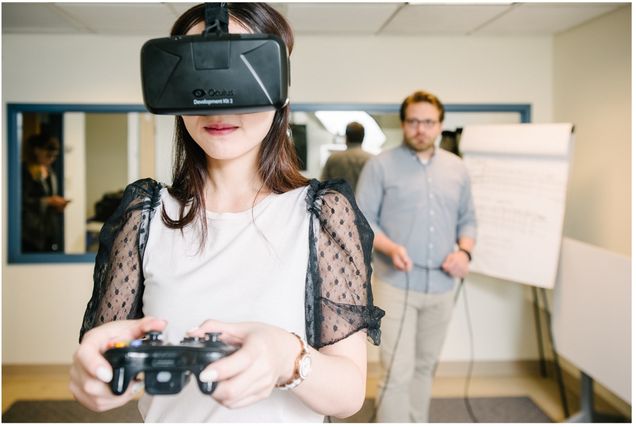Letter from the Director: October 2022

AI: Cause to Rejoice or Frankenstein-like Foreboding?
Artificial intelligence (or AI) has moved from science fiction to mainstream computer science. No longer is it simply the lore of Frankenstein-like creations but rather something that people use in their everyday lives. For instance, web searches using Google rely upon AI. So do the recommendation systems in Netflix and Spotify. If we command Siri or Alexa to do something for us, it is AI that allows them to understand our speech.
As AI advances, the possibilities of its partnering with humans on everyday tasks or even outright replacing humans are becoming increasingly realistic (e.g. self-driving cars). A recent COM Media & Technology Survey examined how the American public feels about AI replacing humans in certain professions. To gain a better understanding of what AI is and what the survey results reveal, I’ve turned to CRC fellows from our Division of Emerging Media Studies. Dr. James Katz is the Feld Professor of Emerging Media and Director of the Division. Ekaterina “Katya” Novozhilova and Dongpeng Huang are PhD students with research interests in AI.
When I asked what AI is, and why it is of interest to communication researchers, Katz explained:
AI is designed to do things that people can do, only much faster and also has its own kind of creativity and learning activities. As such it has the potential to transform society, and therefore is of interest to those of us who study society and its communication processes.
For Novozhilova, AI systems have become frequent human interlocutors. “From children talking with Siri/Alexa to the use of chatbots in therapy by teenagers and adults to the interaction with social robots in senior citizens' homes -- AI might become our lifetime conversational partner,” she said.
One of the things that intrigues Huang about artificial intelligence is that “it is not a living organism, yet it exhibits life-like qualities. AI is able to transmit information and even create information, which makes it a communicator and a social actor.”
When asked what aspects of AI their research examines, Katz indicated, “I am interested in understanding how the public perceives the benefits and risks of AI, and how they might wish to see policy towards AI changed or improved.” Both Novozhilova and Huang are interested in how the public perceives AI in various workplace settings. “Our current study hopes to understand how Americans feel about replacing humans with AI for a variety of jobs,” Huang said.
“Consistent with previous research,” Novozhilova explained, the survey results indicated that “women, people with less income, and older citizens are less welcoming of AI in various occupational roles.” Conversely, Huang added that “Men, minorities, and higher income groups are generally more open to AI replacing human jobs.”
Among the several professions examined in the survey, “the public was most inclined to see journalists replaced by AI compared to other professions,” said Katz. “To me, this suggests that people have reservations about the quality of human-based journalism in the current environment.”
The survey also asked about AI replacing certain religious occupations such as spiritual advisors and leaders of religious congregations. “AI is currently being adopted in various forms by religious congregations” noted Novozhilova. For instance, she said, “robot priests have been recently introduced in Germany, Japan, and Poland. As such, one avenue from which the decisions regarding the controversial employment of algorithms is coming from is religious ethics.” Added Huang, “The spiritual dimension is something we often think of as exclusively human. We wanted to see what the public would think when such a boundary is broken.”
The results revealed that, “Although people have some interest in having AI play a role in their religious lives, there was not a high degree of enthusiasm” explained Katz. Furthermore, observed Huang, “We were surprised to find that whether people were religious or not seemed to have nothing to do with their views on AI replacing religion-related jobs.”
Yet, the fact they found any interest at all suggests an under-explored dimension of technology in society. “It will be valuable to see if over time new generations begin to heavily seek spiritual guidance from AI entities” said Katz. “If so, this will be an historically unprecedented change in religious life.”






 these cases instructive as examples of misinformation circulating beyond social media platforms, but they also serve as an entree to discuss limits of free expression and the gatekeeping obligations of private companies such as Spotify in contrast to broadcast networks, such as ABC (which is owned by The Walt Disney Company), and the stations that air ABC content.
these cases instructive as examples of misinformation circulating beyond social media platforms, but they also serve as an entree to discuss limits of free expression and the gatekeeping obligations of private companies such as Spotify in contrast to broadcast networks, such as ABC (which is owned by The Walt Disney Company), and the stations that air ABC content.
